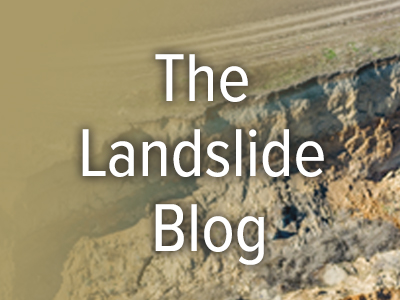The Landslide Blog is written by Dave Petley, who is widely recognized as a world leader in the study and management of landslides.

On 14 August 2023 extremely heavy rainfall affected the north Indian state of Himachal Pradesh, bringing widespread destruction. To date it is known that at least 58 people have been killed in flooding and landslides, but this may well increase further.
The most serious event appears to have occurred in the Shiva Temple in the Summer Hill area of Shimla in Himachal Pradesh, where a landslide struck a complex that was packed with worshipers. At least 10 people were killed, but up to 20 more may be buried in the debris. Rescue operations have been severely hampered by further rainfall. A further five people were killed nearby at Fagli.
Journalist Naveen S Garewal tweeted this image of the aftermath:-
Meanwhile, a further landslide destroyed a substantial section of the Shimla-Kalka railway line, a UNESCO world heritage line, near to Summer Hill. Freelance journalist Saurabh Chauhan tweeted some images of the aftermath:-
The track has been damaged in a number of other locations.
In Solan district, also in Himachal Pradesh, there are reports of a landslide that killed seven members of a single family in Jadon in Kandaghat subdivision. At least four other people were killed in the district, including two children at Balera and a woman at Banal in Ramsheher tehsil.
There are also reports of a single fatality in a landslide in the Rangas area of Hamirpur, whilst in Seghli in Mandi district, seven people were killed in a landslide. It is likely that there were other fatalities in landslides across Himachal Pradesh.
Meanwhile, the same rainfall has also caused substantial issues in the western part of Nepal. Obtaining good information from this area is very challenging, but there are reports of an intriguing landslide on the Kali Gandaki river. ICIMOD has tweeted about a valley blocking landslide, and subsequent flood, which appears to have caused substantial damage. There are also videos of the subsequent flood:-
The village of Kagbeni in Mustang was substantially damaged, but the location of the landslide is unclear.
The most intense part of the monsoon in South Asia continues to affect the western part of the Himalayas, such as Himachal Pradesh and Uttarakhand, with much less rainfall in the east. Indeed, some parts of north India are currently suffering a substantial rainfall deficit.
The eastern Himalayas typically get lower monsoon rainfall than the west. Landslides are typically triggered by large variations from the normal level of rainfall for that location, rather than absolute rainfall totals (in other words, 100 mm in 24 hours would trigger extensive landslides in the UK but would be unlikely to trigger any in Taiwan), explaining why these rainfall events are causing so many problems.
But of course underpinning all of this is the impact of poor quality development, such in inadequately engineered roads, which has made the landscape so much more vulnerable.
